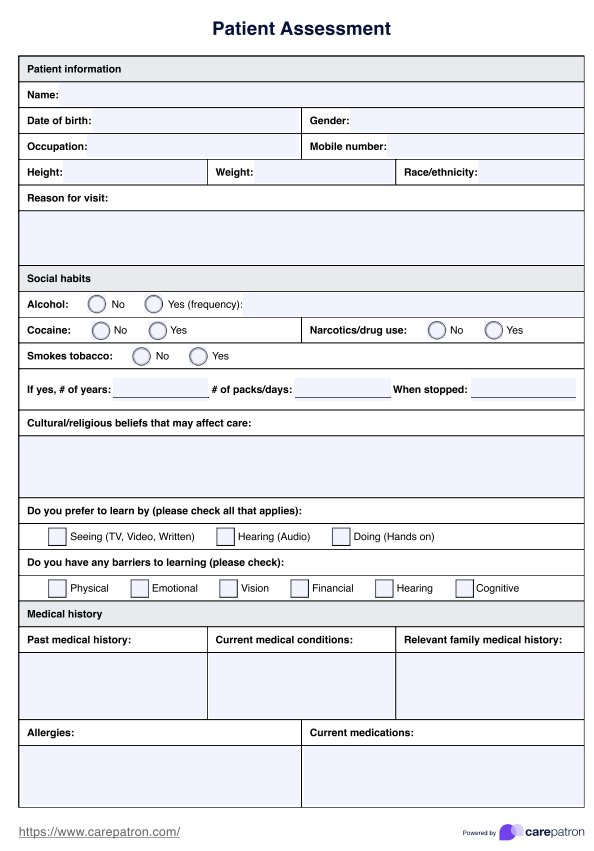A Patient Assessment is a crucial part of the healthcare process, as it helps healthcare professionals gather information about a patient's current health status and develop an appropriate treatment plan.

Patient Assessment
Patient Assessment is an essential part of medical care. Access our free PDF template to get started and streamline your clinical documentation.
Patient Assessment Template
Commonly asked questions
To write an assessment for a patient, begin by collecting comprehensive patient records to ensure all relevant medical history is considered. Use critical thinking skills to analyze this information and identify key health issues. The assessment should detail the patient's current symptoms, vital signs, and any recent changes in their health status. It is crucial to document all findings accurately to inform future treatment plans effectively and improve patient outcomes.
Assessing patients is crucial as it helps healthcare professionals identify and address any health issues that the patient may have. It also helps determine the appropriate course of treatment, including medication, therapy, or surgical intervention. Moreover, regular assessments allow for the monitoring of a patient's progress and can indicate if adjustments to their treatment plan are necessary.
EHR and practice management software
Get started for free
*No credit card required
Free
$0/usd
Unlimited clients
Telehealth
1GB of storage
Client portal text
Automated billing and online payments











